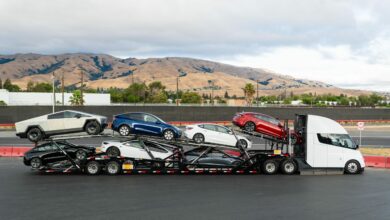
Ford-UAW Contract Negotiations Face Hurdles Amidst Strikes: Impact on Auto Industry
The ongoing labor disputes between Ford and the UAW, along with strikes affecting GM and Stellantis, raise concerns in the automotive sector.
Despite making some progress in contract negotiations with the United Auto Workers (UAW) union, Ford says there are still some major gaps to address before an agreement is reached. Last week, Ford managed to avert the escalation of strikes by meeting certain UAW demands, even as parts workers staged walkouts at 38 Stellantis and General Motors (GM) distribution centers on Friday.
Ford stated on Sunday that there were still “significant gaps to close” in contract negotiations with the UAW, as reported by Reuters. While the UAW acknowledged making “some real progress at Ford” over the weekend, it emphasized that significant issues still needed resolution.
On Sunday evening, Ford emphasized that these “issues are interconnected and must work within an overall agreement that supports our mutual success.”
As of now, the UAW has not issued a response to Ford’s statement. This development comes just ahead of U.S. President Joe Biden’s planned visit to Michigan to express support for the ongoing strikes on Tuesday.
Ford also announced that it would be suspending construction on a $3.5 billion battery manufacturing plant in Michigan, according to a Monday afternoon report from Reuters.
“We are pausing work and limiting spending on construction on the Marshall project until we’re confident about our ability to competitively operate the plant,” Ford stated. “We haven’t made any final decision about the planned investment there.”
The Detroit automakers have presented contracts that include 20-percent raises over the next four and a half years. However, the UAW is reportedly seeking 40-percent wage hikes over a four-year period, along with a reduced 32-hour workweek. Additionally, the union is demanding the reinstatement of defined pension benefits and an end to a tiered wage system that requires a certain amount of time to reach top wages.
Due to the lack of progress in UAW contract negotiations, workers at an additional 20 Stellantis and 18 GM parts distribution centers walked off the job on Friday. These walkouts are straining other Stellantis and GM manufacturing facilities, as they are unable to receive the necessary parts to maintain production. The expanded strikes involved around 5,600 workers, joining the initial wave of 12,700 workers who walked out a week prior.
The UAW represents approximately 150,000 workers in total. Remarkably, this marks the first time in history that the union has launched strikes against all three of the Michigan automakers simultaneously.
Last week, GM was forced to lay off approximately 2,000 workers at a Fairfax, Kansas plant due to a lack of available work caused by the UAW strikes. GM referred to the UAW demands as “untenable” and stated that it would be unable to offer unemployment benefits to the laid-off employees.
As reported by the Detroit Free Press, one auto supplier in Wixom, Michigan announced plans to lay off 230 workers on Monday. This figure represents 75 percent of the workforce at Eagle Industries, Inc., a company that produces materials used in car door components and other non-automotive products. While the company hasn’t disclosed its clients, a separate analysis suggested that its products had been used in Ford’s vehicles.
“In anticipation of a potential layoff at the worksite due to unforeseen business circumstances, we are providing this information,” the company noted in a statement to the state of Michigan. The estimated number of affected workers may change based on evolving business conditions.
It is anticipated that the ongoing strikes will likely lead to higher vehicle prices due to increased part costs. An analysis from the University of Michigan also highlighted that as many as 150,000 workers could face layoffs if the strikes persist for an entire month. This underscores the extensive impact of the situation until the parties can reach a final agreement.
“These growing spillover effects across the automotive supply chain produce successively larger spillovers to the broader economy as laid-off workers in the supply chain lose purchasing power and reduce spending in other parts of the economy,” states the analysis.



